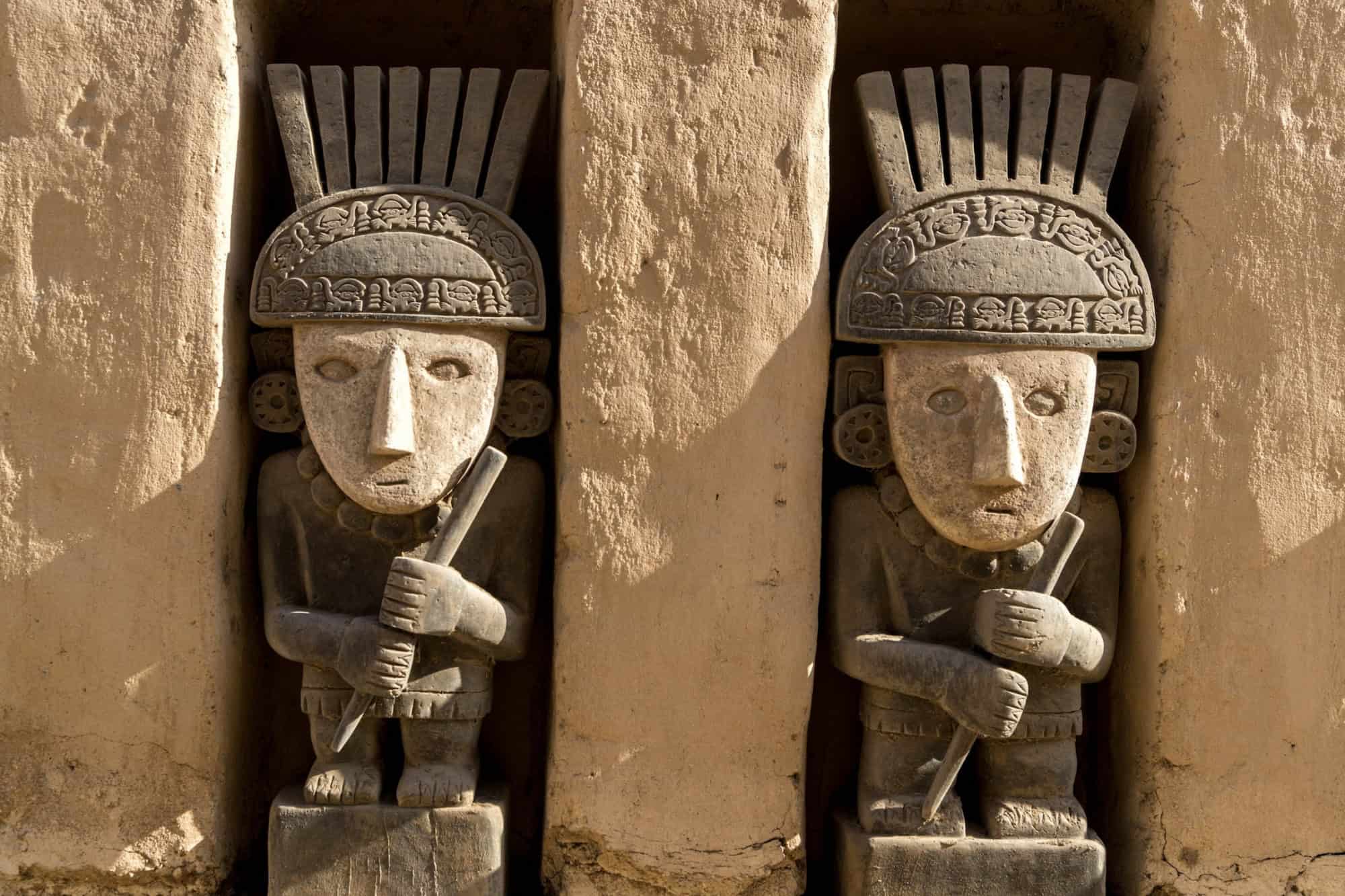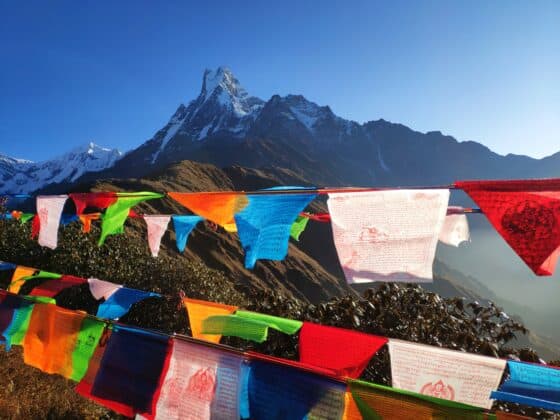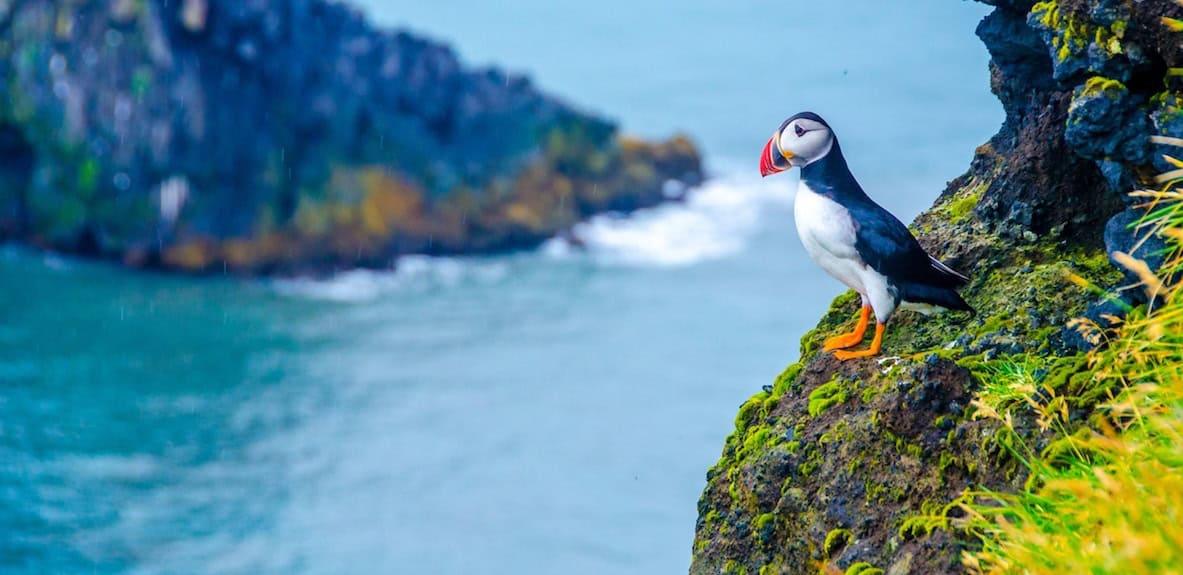The architects of Machu Picchu weren’t the only civilisation to build amazing monuments in Peru. Explore these incredible pre-Columbian sites across the country
Kuélap
Home to the mysterious ‘Cloud People’, the Chachapoyas region of the northern highlands boasts the enigmatic site of Kuélap, along with inaccessible cliff-side burial sites, the outstanding Leymebamba museum and the spectacular 771-m Gocta waterfall. Kuélap is a spectacular pre-Inca walled city at 3000 m which was re-discovered in 1843.
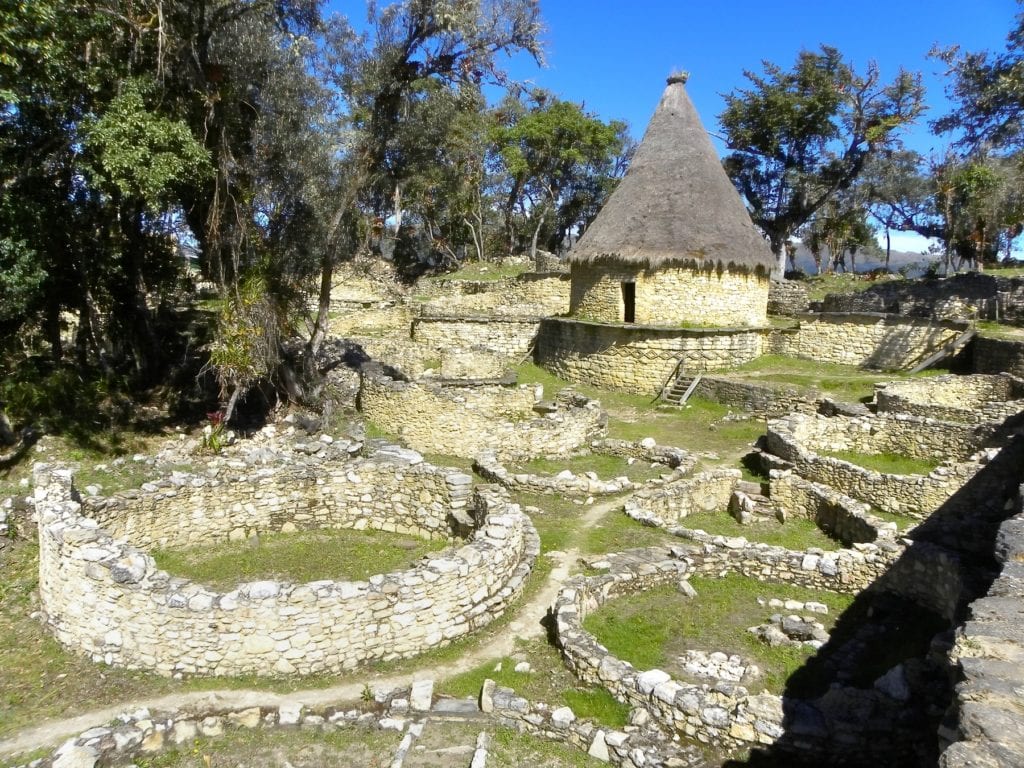
It was built continuously from AD 500 up to Inca times and is said to contain three times more stone than the Great Pyramid at Giza in Egypt. The site lies along the summit of a mountain crest, more than 1 km in length. The massive stone walls, 585 m long by 110 m wide at their widest, are as formidable as those of any pre-Columbian city.
Some reconstruction has taken place, mostly of small houses and walls, but the majority of the main walls on all levels are original, as is the inverted, cone-shaped main temple. The structures have been left in their cloudforest setting, the trees covered in bromeliads and moss, the flowers visited by hummingbirds.

Chavín de Huántar
This archaeological site belonged to one of the earliest and most influential cultures in pre-Inca Peru, and has some extraordinary carvings and stonework. In the lee of the Cordillera Blanca, it is also one of the most spectacularly situated sites in the country.
This fortress temple, built about 800 BC, is the only large structure remaining of the Chavín culture which, in its heyday, is thought to have held influence from Cajamarca and Chiclayo in the north to Ayacucho and Ica in the south.
The main attractions are the marvellous carved stone heads (cabezas clavas), the designs in relief of symbolic figures and the many tunnels and culverts, which form an extensive labyrinth throughout the interior of the pyramidal structure. The carvings are in excellent condition, and the best are now in the Museo Nacional Chavín. The famous Lanzón dagger-shaped stone monolith of 800 BC is found inside one of the temple tunnels.
The Museo Nacional Chavín, 1 km north of the town of the same name and 1.6 km from the site, has a comprehensive collection of items gathered from several deposits and museums, including the Tello obelisk dating from the earliest period of occupation of Chavín (c 100 BC), and many impressive cabezas clavas.
Nazca Lines
Cut into the stony desert above the Ingenio valley north of Nazca are the famous Nazca Lines, thought to have been etched onto the Pampa Colorada sands by three different groups: the Paracas people (700BC-AD 200), the Nazcas (200BC-AD600) and the Huari settlers from Ayacucho (about AD 630).
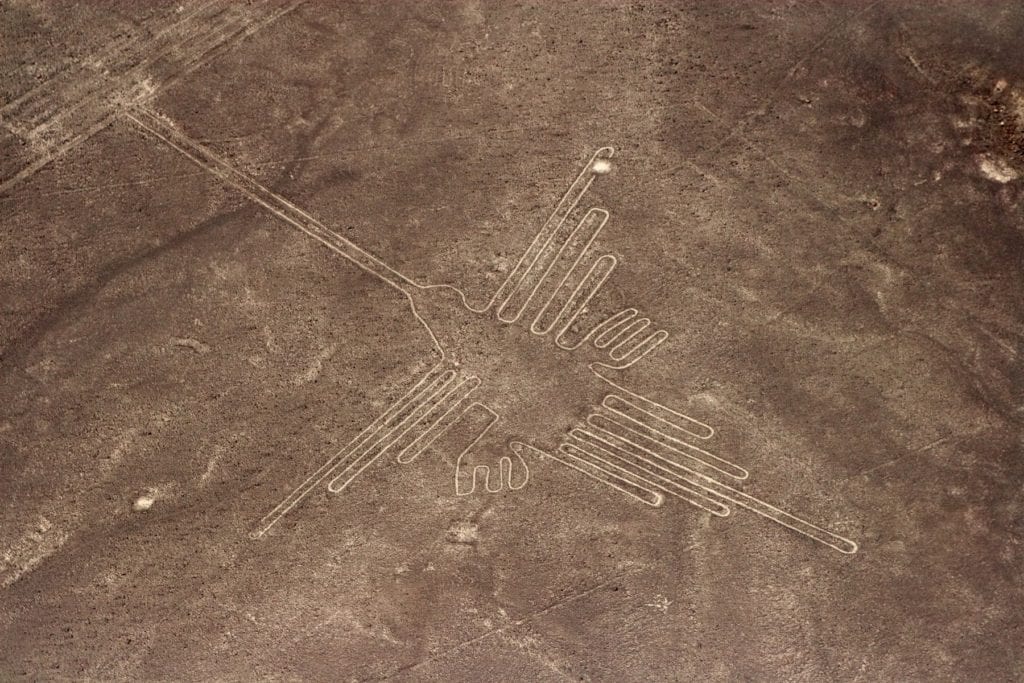
There are large numbers of lines, not only parallels and geometrical shapes but also animals including a dog, an enormous monkey, birds (one with a wing span of over 100 m), a spider and a tree. They are best seen from the air, but three of the huge designs – the Hand, the Lizard (bisected by the Pan-American Highway) and the Tree − can also be viewed from the Mirador Metálico, 25.3 km northwest of Nazca town on the Pan-American Highway.
Go early before it is too hot and allow enough time, queues are long and the lookout is always crowded. There is also a good view of some Lines from the hill 300 m back to Nazca known as Mirador Natural.
Huacas del Sol and de la Luna
A few kilometres south of Trujillo are the huge, fascinating Moche pyramids, the Huaca del Sol and the Huaca de la Luna. Until the Spaniards destroyed a third of it in a vain search for treasure, Huaca del Sol was the largest man-made structure in the western hemisphere, at 45 m high.
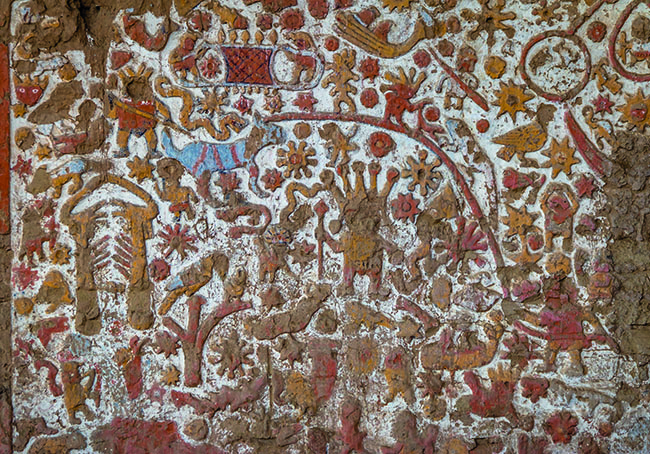
It consisted of seven levels, with 11 or 12 phases of construction over the first six centuries AD. Today, about two thirds of the pyramid have been lost and it is closed to the public. Huaca de la Luna, 500 m away, received scant attention until extensive polychrome moulded decorations were uncovered in the 1990s. The colours on these remarkable geometric patterns and deities have faded little and it is now possible to view impressive friezes of the upper four levels on the northern exterior wall of the huaca.
The highest mural is a ‘serpent’ which runs the length of the wall; beneath it are several levels of repeated motifs depicting victorious warriors, ‘felines’, ‘fishermen’ holding fish and huge ‘spider/crab’ images. Combined with intricate, brightly painted two-dimensional motifs in the sacrificial area atop the huaca, and with new discoveries in almost every excavation, Huaca de la Luna is a truly significant site well worth visiting.

Chan Chán
The imperial city of the Chimú domains was once the largest adobe city in the world. The vast, crumbling ruins consist of 10 great compounds built by Chimú kings, with perimeter walls up to 12 m high surrounding sacred enclosures with usually only one narrow entrance. Inside, rows of storerooms contained the agricultural wealth of the kingdom, which stretched 1000 km along the coast from near Guayaquil to the Carabayllo Valley, north of Lima. The Incas almost certainly copied this system and used it in Cuzco where the last Incas continued building huge enclosures. The Chimú surrendered to the Incas around 1471 after 11 years of siege.
The dilapidated city walls enclose an area of 28 sq km containing the remains of palaces, temples, workshops, streets, houses, gardens and a canal. What is left of the adobe walls bears either well restored or modern fibreglass fabrications of moulded decorations showing small figures of fish, birds, fishing nets and various geometric motifs. Painted designs have been found on pottery unearthed from the debris of a city ravaged by floods, earthquakes and huaqueros (grave looters). The Ciudadela de Nik-An (formerly called Tschudi) is the only palace open to visitors.

Caral
This ancient city, 26 km from the coast and around 150km north of Lima, dates from about 2600 BC. Many of the accepted theories of Peruvian archaeology have been overturned by Caral’s age and monumental construction. It appears to be the oldest city in South America (a claim disputed by the Miravalles site, in the department of Cajamarca).
The dry desert site lies on the southern fringes of the Supe Valley, along whose flanks are 32 more ruins, 19 of which have been explored. Caral covers 66 ha and contains eight significant pyramidal structures. To date seven have been excavated by archaeologists from the University of San Marcos, Lima, who are undertaking careful restoration on the existing foundations to re-establish the pyramidal tiers.

Marca Huamachuco
These hilltop pre-Inca fortifications south-east of Cajamarca rank in the top 10 archaeological sites in Peru. They are 3 km long, dating back to at least 300 BC though many structures were added later. Its most impressive features are: El Castillo, a remarkable circular structure with walls up to 8 m high located at the highest point of the site, and El Convento complex, five circular structures of varying sizes towards the northern end of the hill. The largest one has been partially reconstructed.
